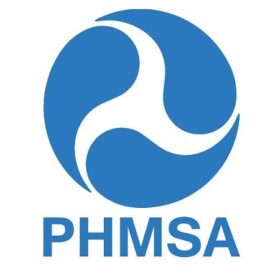
The Interstate Natural Gas Association of America (INGAA) respectfully submits these comments in response to the United States Environmental Protection Agency’s (EPA’s) proposed rule, Review of the Primary National Ambient Air Quality Standard for Oxides of Nitrogen (the proposed NO2 NAAQS rule).
EXECUTIVE SUMMARY
Over the years, INGAA has commented on many EPA rulemakings and provided technical data and other content to facilitate the development of better federal standards. INGAA recommends that EPA acknowledge and address NO2 NAAQS implementation challenges that remain, such as the AERMOD technical tool used for permitting.
INGAA highlights the following key points presented in its comments:
- When adopting a 1-hour NO2 NAAQS in 2010, EPA’s focus was on the potential affects near roadways, and that standard included an initiative to install monitoring networks near roads in urban areas. The monitoring initiative documented ambient NO2 ambient levels below the NAAQS and was streamlined. EPA should now focus its resources on addressing technical issues that affect stationary sources.
- The 2010 one-hour NO2 NAAQS introduced technical complications and associated costs when modeling near-field impacts for new or existing sources (e.g., for Title V permits) using AERMOD, EPA’s preferred dispersion model. EPA should improve AERMOD through updates to address short-term averaging times and near-field impacts.
- An industry funded research program will provide a data set that can be used to assess AERMOD performance for sources such as compressor stations, and that those findings should be utilized to facilitate AERMOD improvement.
- Until AERMOD updates are completed, EPA should identify alternatives to performing one-hour dispersion modeling and encourage the acceptance of these alternatives throughout the regulatory community.
DETAILED COMMENTS
(1)EPA should shift its focus from potential affects near roadways to address technical issues that affect stationary sources.
In response to the 2010 NO2 NAAQS, which introduced a new 1-hour standard, EPA took notable actions. The 2010 rule[1] included requirements to install NO2 ambient monitors near roads in over one hundred urban areas. For initial attainment designations, in February 2012,[2] EPA designated the entire U.S. as unclassifiable / attainment, pending acquisition and review of new monitoring data. And, in December 2016,[3] EPA streamlined the urban near-road monitoring requirements by eliminating requirements for urban areas with Core Based Statistical Area populations between 500,000 and 1,000,000 because near-road monitors in larger urban areas showed air quality levels well below the 1-hour standard.
These actions demonstrated EPA’s focus on near-road implications of the new 1-hour standard adopted in 2010. Significant analysis and resources have been focused on that effort. While ambient monitoring continues, near-road monitoring demonstrated lower ambient impacts than many anticipated, and progress has been made for concerns related to urban, near-road ambient NO2 concentrations. EPA should now refocus its efforts to address implementation challenges associated with stationary sources, such as technical tools and data needs for major source permitting.
(2)EPA should update AERMOD to address near-field impacts and short-term averaging times.
While INGAA acknowledges that the primary purpose of the proposed NO2 NAAQS rule is to address the NO2 NAAQS standard, INGAA is compelled to comment on an important implementation issue. As EPA has migrated to a shorter averaging time for the NO2 NAAQS, complementary improvements to technical tools integral to NAAQS implementation, such as permitting, have not been adequately addressed.
AERMOD, EPA’s dispersion model for major source permitting, was developed with a focus on larger sources with tall stacks such as electric utilities. In addition, AERMOD uses 1-hour input data (i.e., source emissions data, meteorology) for a model with output results that are also hourly averages. Model formulation focused on larger sources such as electrical generating units (EGUs) raises questions about performance for sources with shorter stacks and near-field impacts, such as compressor stations. Concerns about AERMOD’s ability to accurately model compressor stations are also compounded by the implications of averaging times. This is an inherent weakness in AERMOD, because computational models that characterize physical phenomena generally employ more refined time increments to achieve a “rolled up” model result. Thus, time scales shorter than an hour are warranted to adequately model 1-hour ambient impacts, especially for near-field impacts from sources such as compressor stations.
In addition, supplementary data for 1-hour NO2 modeling is lacking, such as background ozone (which reacts with NO in the plume to form NO2), background NO2, and time differentiated emission inventories from nearby sources that may be included in modeling. Without this data, “process” related requirements and guidance generally lead to the use of conservative data that will likely over-estimate real world impacts.
The modeling tools available to implement the NO2 NAAQS are technically questionable and rely far too much on conservative assumptions that do not reflect actual air quality. Using the models for regulatory purposes – e.g., permitting – can lead both to slow and complex permit proceedings and possibly the unnecessary imposition of expensive emissions control requirements that do not reflect air quality needs.
The 1-hour NO2 NAAQS has introduced technical challenges and costs associated with modeling near-field impacts for new and existing sources using the AERMOD dispersion model.
EPA should update AERMOD to better accommodate short-term averaging times and near-field impacts from sources such as natural gas transmission compressor stations. Due to questions about the performance of AERMOD and lack of supplementary input data for the 1-hour NAAQS, EPA should develop alternatives to modeling for comparison to the 1-hour NAAQS until AERMOD performance is better understood and updates are implemented. As further explained below, INGAA believes that an industry research initiative will provide EPA with valuable data for assessing AERMOD performance and encourages EPA to use these data to facilitate AERMOD improvements for compressor stations and similar source types.
- An industry funded research program will provide a comprehensive data set that can be used to assess AERMOD performance for sources such as compressor stations. EPA should use these data to improve AERMOD.
INGAA and its members in the natural gas transmission industry understand that dispersion models are important technical tools. For this reason, INGAA (and others) are funding and participating in a multi-year, multi-million dollar program to gather a robust dataset from a compressor station in order to assess the performance of AERMOD and potentially identify areas where improvements are warranted.
The Pipeline Research Council International (PRCI) is managing this collaborative research project to study potential improvements to AERMOD. INGAA is co-funding this research project, and PRCI and INGAA member companies have reviewed the data collection approach and discussed the status of this project with technical staff in EPA’s Office of Air Quality Planning and Standards.
This project differs from the incomplete data sets used in previous model evaluation efforts because the focus of the PRCI study was to obtain complete, yearlong non-EGU data that includes concurrent emissions, ambient, and meteorological sub-hour data to evaluate near-field model performance for compressor station sources. Once the report is complete, PRCI will share a copy of the report and the related comprehensive monitoring dataset with EPA.
INGAA expects that the PRCI project will provide insight into scenarios or technical challenges that result in model over-prediction for near-field impacts from compressor station combustion sources. A draft report is being finalized, and that report and the related field data will be available later this year. Associated analysis should provide the opportunity to pursue AERMOD performance improvements. In addition to the technical performance of AERMOD, this project may also provide insight into “process” bias that is due to data input deficiencies and resulting requirements for permitting, such as the lack of local meteorology data and the use of conservative estimates for background NO2 and ozone because local data are not available. The analysis should also provide the ability to assess likely technical issues with AERMOD identified in the literature by using the new, robust data set from an actual compressor station. Example technical concerns from the literature, that will likely be reinforced by PRCI’s results, include the following types of issues for near-field impacts:
- Even in the most complex analysis (i.e., using AERMOD “Tier 3” PVMRM), simplified plume treatment of NO to NO2 chemistry and associated assumptions regarding an instantaneously well-mixed plume (e.g., ambient ozone availability for reaction with NO) likely results in an over-estimate of near-field impacts;
- Steady state, invariant model input assumptions for estimating average 1-hour impacts produces conservative results (i.e., sub-hourly data should be used to model 1-hour impacts) that are likely compounded at low wind speeds;
- Treatment of plume downwash and model over-predictions;
- The implications of “process” conservatism (e.g., assumptions regarding background NO2 and ozone when site-specific information are not available).
INGAA encourages ongoing assessment of AERMOD’s performance for modeling compressor stations and stationary sources with similar dispersion characteristics. INGAA recommends that EPA pursue AERMOD improvements as expeditiously as possible, and ultimately codify such changes through a public or peer review process and subsequent revisions to 40 C.F.R, Part 51 Appendix W.
- Until AERMOD updates are completed, EPA should identify alternatives to performing 1-hour dispersion modeling and encourage the acceptance of these alternatives throughout the regulatory community.
The lack of input data availability and questions about model performance can introduce permitting delays and lead to inaccurate conclusions regarding the need for or level of emissions mitigation. Until these issues are better understood and addressed, INGAA recommends that EPA implement alternatives to using modeling to show compliance with the 1-hour NO2 standard, and encourage the regulatory community to accept these alternatives. An example approach could include:
- In the near-term, in the absence of a dispersion model designed for sub-hourly iterations, modeling demonstrations should not be required for hourly standards. Instead, compliance demonstrations should be based on modeling for a longer NAAQS period (e.g., annual NO2 NAAQS).
- For the mid-range time period, EPA should address issues with AERMOD and related input data gaps that likely result in over-estimates for 1-hour modeling demonstrations. The PRCI project should provide insight into potential improvements. Interim solutions could be implemented via EPA guidance.
- In the long term, EPA should pursue and implement AERMOD advancements or a new air dispersion model that accommodates sub-hourly data and implements best science practices. These changes should ultimately be implemented through amendments to 40 C.F.R. Part 51, Appendix W.
[1] 75 Fed. Reg. 6,474 (Feb. 9, 2010).
[2] 77 Fed. Reg. 9,532 (Feb. 17, 2012).
[3] 81 Fed. Reg. 96,381 (Dec. 30, 2016).







